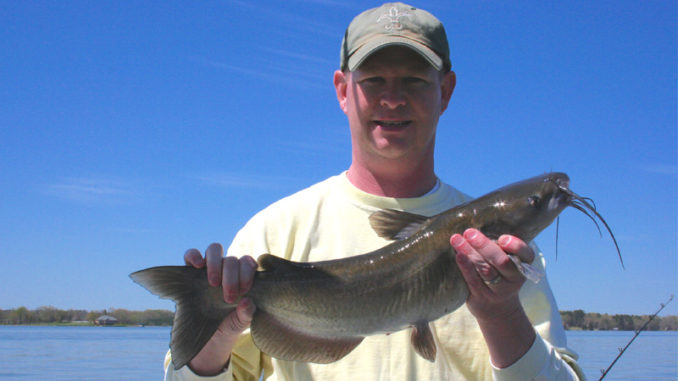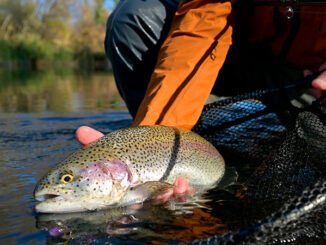
Fish is present in lower 48 states and parts of Canada
Channel catfish are known as the smallest of the “big three” cats. The average size of these fish is about 16 inches, or 1 1/2 pounds. But they can grow much larger.
Like their two bigger cousins, the blue catfish and the flathead catfish, they have spiny dorsal and pectoral fins. They also have whiskers, known as barbels, around their mouths. They have slender, long bodies that are typically pale blue to olive on their backs and sides, and white bellies.
Channel catfish have deeply forked tails and small dark spots throughout their bodies, especially when young. These spots usually fade as the fish ages and grows in size. Because of this, exceptionally big channel cats are often mistaken for blue cats, which also have forked tails. Trophy-sized channels can also appear more blue or gray than olive, further confusing anglers as to which species of catfish they’ve caught.
Count the rays for sure identification
The best way to tell the difference between a channel catfish and a blue catfish is to count the rays on the fish’s anal fin. Channel cats have 25 to 29 rays. Blue cats have 30 to 36.
The favored diet of channel catfish includes other fish, crawdads, mollusks, and insects. They often eat aquatic vegetation, but fisheries biologists believe this may occur as the fish eat small prey hiding in vegetation, which the channel cats ingest inadvertently. However, during extreme conditions when little bait is present, channel cats are known to eat large amounts of vegetation, suggesting the fish will adapt as situations dictate.

Channel cats spawn typically from May to July in waters that range from 70 to 80 degrees. The males construct nests in the undercuts of river banks, in logs, and in other sunken debris. Females deposit a mass of gelatinous eggs into the nests, which are guarded by the males. Males stay with the fry for an extended period after they hatch.
Channel catfish are often stocked in new ponds
When fishing ponds are constructed throughout the United States, or when established ponds are lacking fish for sport, fisheries biologists suggest stocking channel catfish along with bream and bass. Channel cats are also the main species in aquaculture across the southeast.
Channel catfish feed heavily between sunset and sunrise, and are often caught by anglers targeting either blue or flathead catfish. Anglers specifically targeting channels often rely on “stink baits” which are formed into bait balls, squirted as a liquid into plastic forms, or pasted onto sponges. Cut bait, chicken livers, and cheese also make good baits for channels.
In the south, these fish are most commonly referred to as channel cats, but they are known by other names in some areas. One common nickname for these fish is government catfish, probably because state and federal government agencies stocked them throughout many states in the 1960s and 1970s. Other nicknames for the fish include fork-tailed catfish, spotted catfish, willow catfish, and lady catfish. In some western states, they are commonly called “grace.”
The South Carolina state record channel catfish tipped the scales at 58 pounds and was caught in Lake Moultrie by W.H. Whaley in 1964. This is also the current world record.
North Carolina’s state record channel, a 26-pound fish, was caught by Taner Rudolph in July 2021.





Be the first to comment